HD 88133 is a yellow star with an orbiting exoplanet in the equatorial constellation of Leo. It has an apparent visual magnitude of 8.01, which is too faint to be visible to the naked eye. With a small telescope it should be easily visible. The distance to this system, as measured through parallax, is 240 light years, but it is slowly drifting closer with a radial velocity of −3.6 km/s.

Omega Virginis is a solitary star in the zodiac constellation Virgo. It has an apparent visual magnitude of +5.2, which is bright enough to be faintly visible to the naked eye. Based upon an annual stellar parallax shift of 6.56 milliarcseconds, it is located about 500 light years from the Sun.

Lambda Andromedae, Latinized from λ Andromedae, is the Bayer designation for a binary star system in the northern constellation of Andromeda. At an estimated distance of approximately 84.6 light-years from Earth, it has an apparent visual magnitude of +3.8. This is bright enough to be seen with the naked eye. The system is drifting further away from the Sun with a radial velocity of +6.8 km/s.
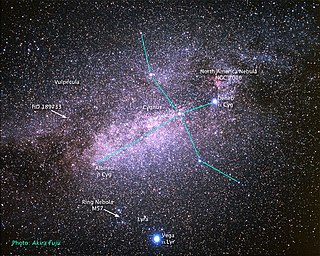
HD 189733, also catalogued as V452 Vulpeculae, is a binary star system 64.5 light-years away in the constellation of Vulpecula. The primary star is suspected to be an orange dwarf star, while the secondary star is a red dwarf star. Given that this system has the same visual magnitude as HD 209458, it promises much for the study of close transiting extrasolar planets. The star can be found with binoculars 0.3 degrees east of the Dumbbell Nebula (M27).

8 Andromedae, abbreviated 8 And, is a probable triple star system in the northern constellation of Andromeda. 8 Andromedae is the Flamsteed designation. It is visible to the naked eye with an apparent visual magnitude of 4.82. Based upon an annual parallax shift of 5.7 mas, it is located about 570 light years from the Earth. It is moving closer with a heliocentric radial velocity of −8 km/s.
14 Andromedae, abbreviated 14 And, also named Veritate, is a single, orange-hued giant star situated approximately 247 light-years away in the northern constellation of Andromeda. It is dimly visible to the naked eye with an apparent visual magnitude of 5.22. The star is moving closer to the Earth with a heliocentric radial velocity of −60 km/s. In 2008 an extrasolar planet was discovered to be orbiting the star.

15 Andromedae, abbreviated 15 And, is a single, variable star in the northern constellation of Andromeda. 15 Andromedae is the Flamsteed designation, while its variable star designation is V340 And. Its apparent visual magnitude is 5.55, which indicates it is faintly visible to the naked eye. Its estimated distance from the Earth is 252 light years, and it is moving further away with a heliocentric radial velocity of 13 km/s.
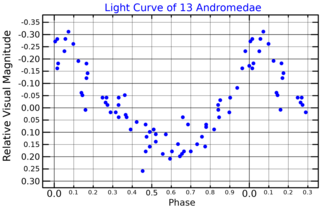
13 Andromedae, abbreviated 13 And, is a single, blue-white hued variable star in the northern constellation of Andromeda. 13 Andromedae is the Flamsteed designation, while it bears the variable star designation V388 Andromedae. With a typical apparent visual magnitude of around 5.75, it is dimly visible to the naked eye under good seeing conditions. The distance to this star can be directly estimated from its annual parallax shift of 10.9 mas, yielding a range of 300 light years. At that distance, its brightness is diminished by an extinction of 0.13 magnitude due to interstellar dust. The star is moving closer to the Earth with a heliocentric radial velocity of −8 km/s.
Z Andromedae is a binary star system consisting of a red giant and a white dwarf. It is the prototype of a type of cataclysmic variable star known as symbiotic variable stars or simply Z Andromedae variables. The brightness of those stars vary over time, showing a quiescent, more stable phase and then an active one with a more pronounced variability and stronger brightening and/or dimming.

R Andromedae is a Mira-type variable star in the constellation Andromeda. Its spectral class is type S because it shows absorption bands of zirconium monoxide (ZrO) in its spectrum. It was among the stars found by Paul Merrill to show absorption lines of the unstable element technetium, establishing that nucleosynthesis must be occurring in stars. The SH molecule was found for the first time outside earth in the atmosphere of this star. The star is losing mass due to stellar winds at a rate of 1.09×10−6M☉/yr.
32 Vulpeculae is a single star located around 610 light years away from the Sun in the northern constellation Vulpecula, a few degrees south of the border with Cygnus. It is visible to the naked eye as a faint, orange-hued star with a typical apparent visual magnitude of 5.03. This object is drifting further away from the Earth with a heliocentric radial velocity of +6 km/s.
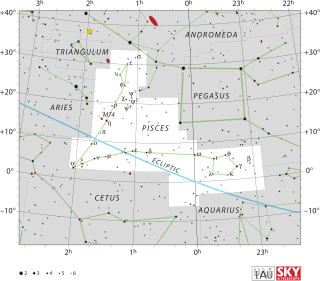
Phi Piscium, Latinized from φ Piscium, is a quadruple star system approximately 380 light years away in the constellation Pisces. It consists of Phi Piscium A, with a spectral type of K0III, and Phi Piscium B. Phi Piscium A possesses a surface temperature of 3,500 to 5,000 kelvins. Some suggest the only visible companion in the Phi Piscium B sub-system is a late F dwarf star, while others suggest it is a K0 star. The invisible component of the Phi Piscium B sub-system is proposed to have a spectral type of M2V. The star system has a period of about 20½ years and has a notably high eccentricity of 0.815.
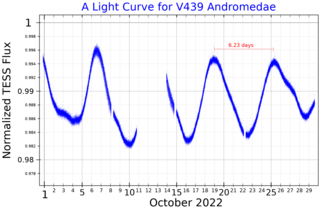
HD 166 or V439 Andromedae is a 6th magnitude star in the constellation Andromeda, approximately 45 light years away from Earth. It is a variable star of the BY Draconis type, varying between magnitudes 6.13 and 6.18 with a 6.23 days periodicity. It appears within one degree of the star Alpha Andromedae and is a member of the Hercules-Lyra association moving group. It also happens to be less than 2 degrees from right ascension 00h 00m.
HD 167042 is a star with an orbiting exoplanet in the northern constellation of Draco. With an apparent visual magnitude of +5.97, the star is dimly visible to the naked eye. It is located at a distance of 162 light years based on parallax measurements, but it is drifting closer with a radial velocity of −18 km/s. HD 164595 has a relatively large proper motion, traversing the celestial sphere at an angular rate of 0.270″ yr−1.
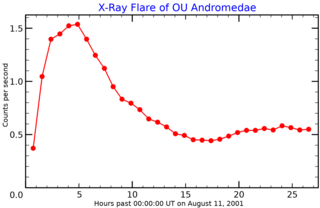
OU Andromedae is a rotationally variable star in the constellation Andromeda. Varying between magnitudes 5.87 and 5.94, it has been classified as an FK Comae Berenices variable, but the classification is still uncertain. It has a spectral classification of G1IIIe, meaning that it is a giant star that shows emission lines in its spectrum. It is also likely in its horizontal branch phase of evolution.
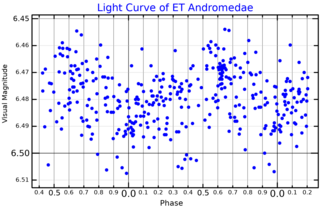
ET Andromedae is a binary star system star in the northern constellation of Andromeda. It has an apparent visual magnitude of 6.48, placing it at the nominal limit for visibility with the naked eye. The distance to this system can be estimated from its annual parallax shift of 5.42 mas, which yields a value of 602 light years.
HD 202951 is a probable binary star system located in the northern constellation of Equuleus. It is near the lower limit of visibility to the naked eye, having an apparent visual magnitude of 5.97. The distance to this system can be estimated from the annual parallax shift of 2.74 mas, yielding a value of roughly 1,190 light years. It is moving closer with a heliocentric radial velocity of −37 km/s.
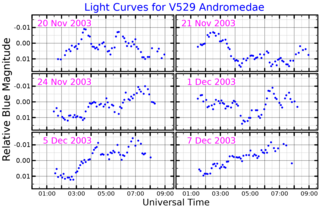
V529 Andromedae, also known as HD 8801, is a variable star in the constellation of Andromeda. It has a 13th magnitude visual companion star 15" away, which is just a distant star on the same line of sight.

EG Andromedae is a symbiotic binary in the constellation Andromeda. Its apparent visual magnitude varies between 6.97 and 7.80.
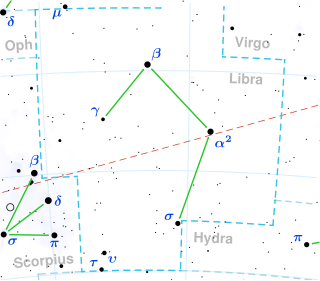
HD 125248 is a binary star system in the equatorial constellation of Virgo. It has the variable star designation CS Virginis, while HD 125248 is the designation from the Henry Draper Catalogue. This system is dimly visible to the naked eye as a point of light with an apparent visual magnitude that ranges from 5.84 down to 5.95. It is located at a distance of approximately 280 light years from the Sun based on parallax measurements, but is drifting closer with a heliocentric radial velocity of −8 km/s.














